New Technologies
Patent Pending Boolean and Coded Transfer of Power and Data
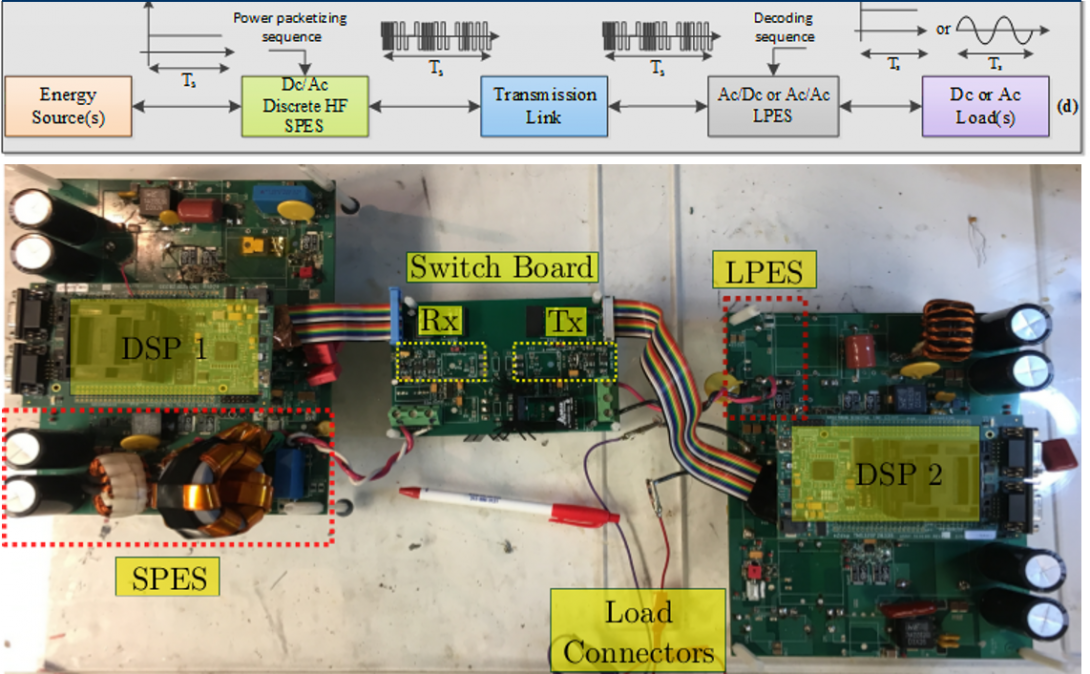
Patented Boolean and Coded Transfer of Power and Data
Systems and methods for co-transmission of discrete power and data
Patent number: 11245437
Patented Differential-Mode Converter
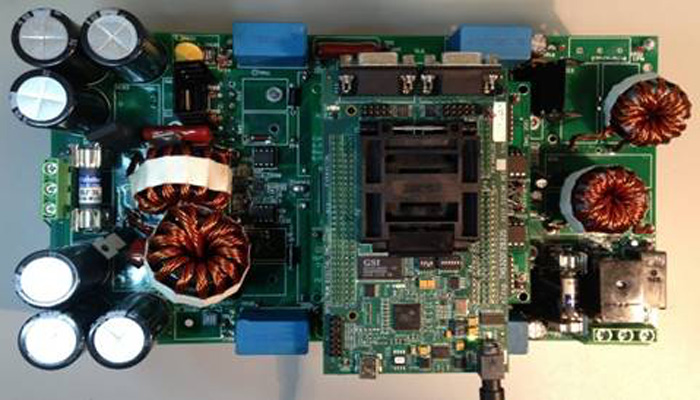
Patented Differential-Mode Converter for Renewable- / Battery-Energy based System
Scalable single-stage differential power converter
Patent number: 9379640
Abstract: An embodiment of the invention is a scalable single stage differential power converter. The inverter can be implemented in signal, split and multi-phases. A multiphase converter can be achieved with only three modules. Integrated magnetics used in preferred embodiments of the invention mitigate the DC component of the steady-state dynamics and can be extended to AC ripple mitigation. Control architectures in preferred embodiments can mitigate higher order harmonics in steady state dynamics. Embodiments of the invention also provide scalability for voltage and current source topologies.r can be achieved with only three modules. Integrated magnetics used in preferred embodiments of the invention mitigate the DC component of the steady-state dynamics and can be extended to AC ripple mitigation. Control architectures in preferred embodiments can mitigate higher order harmonics in steady state dynamics. Embodiments of the invention also provide scalability for voltage and current source topologies.
Three-phase differential mode converter
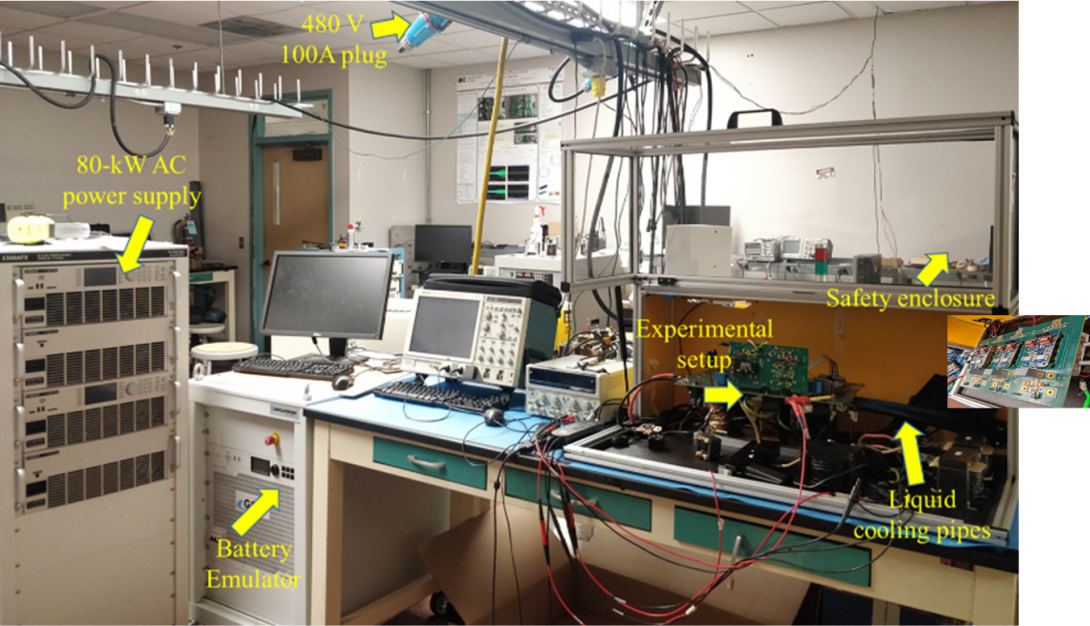
Patented SiC Universal Electric-Vehicle (EV) Supercharger
Three-phase differential mode converter
Patent number: 11,502,596 B2
Patent number: 12,040,696
Abstract: A system for charging a battery includes three sub-modules, each receiving a respective phase of a three-phase alternating current (AC) signal. The three sub-modules cooperate to transform the respective phases of the three-phase AC signal to a direct current (DC) signal by passing the respective phases of the three-phase AC signal through a respective semiconductor device configured to discontinuously modulate the respective phase of the three-phase AC signal to convert it to a DC signal provided to the battery to charge the battery.
Patented Hybrid-Modulation-based Capacitor-less High-Frequency-Link Inverter
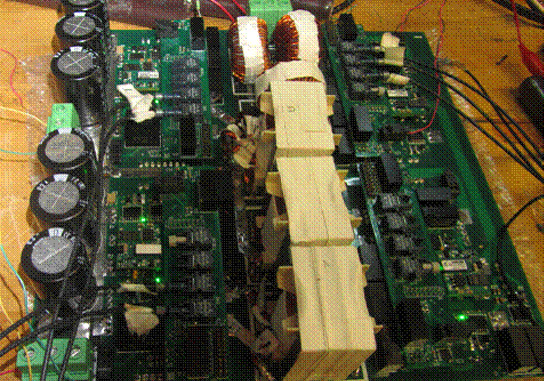
Patented Hybrid-Modulation-based Capacitor-less High-Frequency-Link Inverter for Renewable- / Battery-Energy based System
Zero-Ripple Filter Based Inverter
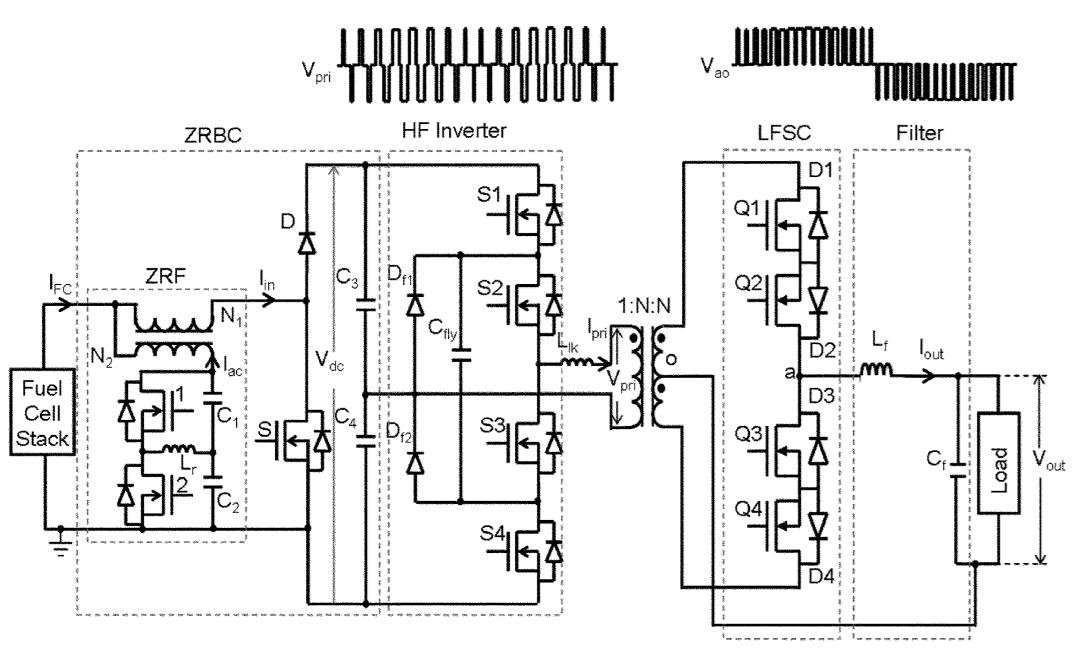
Patented Zero-Ripple Filter Based Inverter for Fuel-Cell- / Renewable- / Battery-Energy based System
Power conditioning system for energy sources
Patent number: 7372709
Abstract: The present invention is directed to an apparatus for conditioning power generated by an energy source. The apparatus includes an inverter for converting a DC input voltage from the energy source to a square wave AC output voltage, and a converter for converting the AC output voltage from the inverter to a sine wave AC output voltage. A key aspect of the technology pertains to the integration of a ripple-mitigating active filter (power decoupler) that mitigates low and high frequency current ripples that may otherwise affect the operation, durability, and energy efficiency of a DC energy source.
Patented Photonically-Switched Wide-Bandgap Device
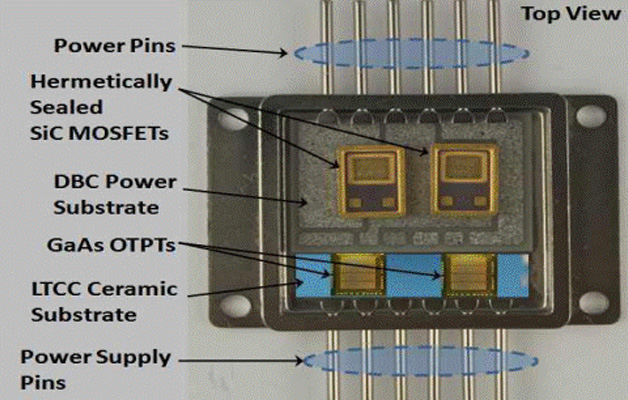
Patented Photonically-Switched Wide-Bandgap Device
Photonically-activated single-bias fast-switching integrated thyristor
First Optically-Controlled High Frequency SiC Converter
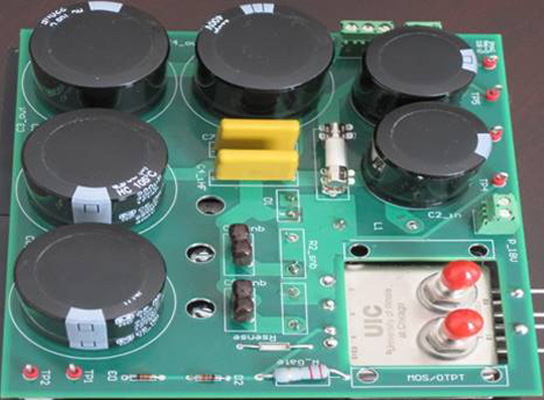
First Patented Photonic Device based Optically-Controlled High-Frequency SiC Converter
Optical control of power MOSFETs can provide several improvements in system parameters including reduced electromagnetic interference (EMI), robust electrical separation, and separation of power and control stages. Control signals, by necessity, have very large di/dt and dv/dt values, which initiate noise problems in the power stage and can have coupling effects. Moving these signals to fiber-optic transmission reduces EMI and cross-talk effects. An optical link also allows the control and driver stages of a converter to remain separate, which can be useful for high-temperature power electronics. Such applications have become increasingly important and pervasive as power semiconductor devices (PSDs) have transitioned to wide-bandgap materials (such as SiC and GaN) enabling the power converters to operate at temperatures once thought extreme for Si based power devices and also providing multi-fold improvements in many metrics of the switched-mode converters encompassing switching frequency and power density. Towards that end, a solution to the optical control of a power SiC MOSFET and high-frequency SiC power converter is presented.